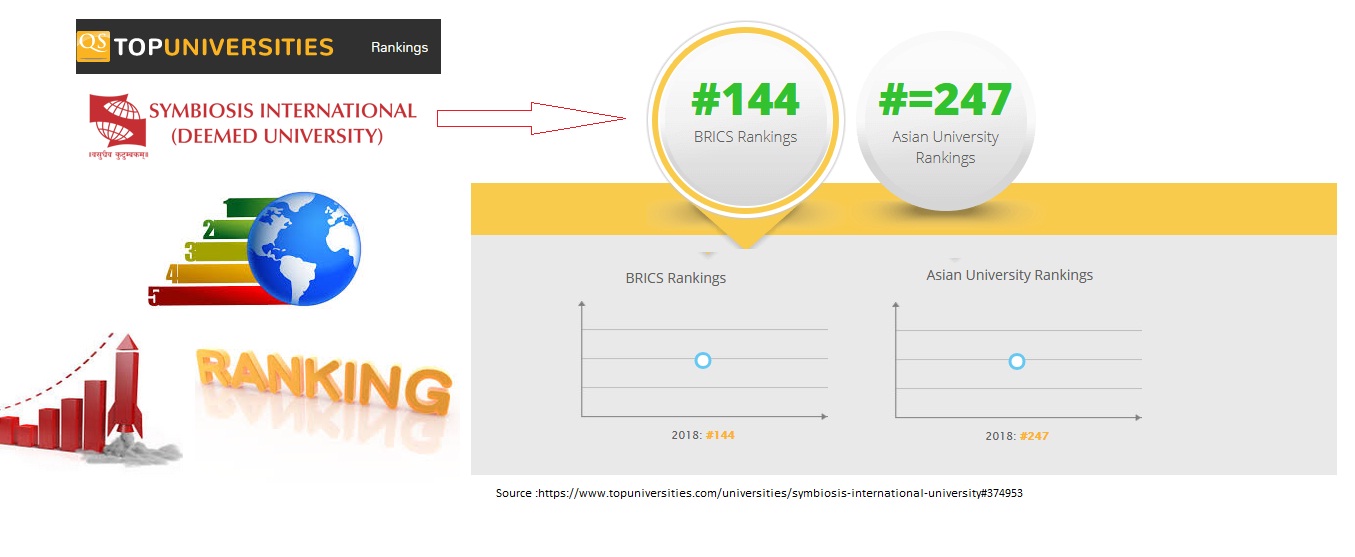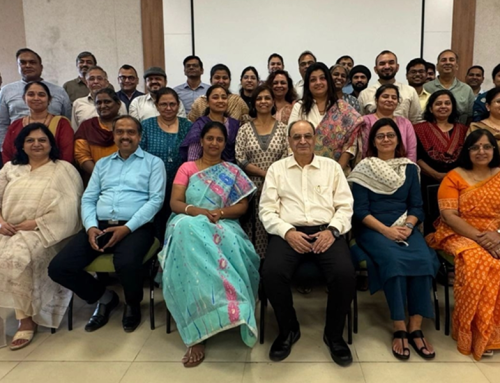QS BRICS University Rankings 2018 – Symbiosis International ( Deemed University) finds its place

Launched in 2013, the QS BRICS University Rankings is an annual ranking of the top universities in the five BRICS countries – Brazil, Russia, India, China and South Africa.
Symbiosis International ( Deemed University) finds its place in the QS BRICS University Rankings 2018 and has been placed 144 in BRICS Ranking by QS and 247 in Asian University Ranking
The project, developed by QS in collaboration with Russian news agency Interfax, emerged from a desire to better highlight and track progress made by each of the five BRICS countries in the higher education field, and to facilitate comparison of universities in nations that share certain key socio-economic dynamics.
Academic reputation (30%) This is based on analysis of QS’s major global survey of academics, who are asked to identify the top-performing universities in their own field of expertise.
Employer reputation (20%) This is based on QS’s major global survey of graduate employers, who are asked to identify the universities they perceive as producing the best graduates.
Faculty/student ratio (20%) This reflects the number of students enrolled per full-time academic faculty member employed. The aim is to give an indication of commitment to teaching and student support.
Staff with a PhD (10%) Based on the proportion of academic staff members with a PhD, this indicator aims to assess how successful universities have been in recruiting highly qualified faculty members – a major priority for many institutions in the BRICS countries.
Papers per faculty (10%) Calculated using data from Scopus, this indicator assesses research productivity, based on the number of research papers published per academic staff member.
Citations per paper (5%) Again calculated using the Scopus database, this indicator aims to assess research impact, based on the frequency with which an institution’s research is cited by other researchers.
International faculty (2.5%) This score reflects the percentage of faculty members at the university who are international, to show how successful each institution has been in attracting academics from further afield.
International students (2.5%) This last indicator reflects the percentage of students enrolled at the university who are international, giving a further indication of each institution’s global appeal.








 !!
!!






